Taufik Abrão
Beamforming Control in RIS-Aided Wireless Communications: A Predictive Physics-Based Approach
Aug 23, 2025Abstract:Integrating reconfigurable intelligent surfaces (RIS) into wireless communication systems is a promising approach for enhancing coverage and data rates by intelligently redirecting signals, through a process known as beamforming. However, the process of RIS beamforming (or passive beamforming) control is associated with multiple latency-inducing factors. As a result, by the time the beamforming is effectively updated, the channel conditions may have already changed. For example, the low update rate of localization systems becomes a critical limitation, as a mobile UE's position may change significantly between two consecutive measurements. To address this issue, this work proposes a practical and scalable physics-based solution that is effective across a wide range of UE movement models. Specifically, we propose a kinematic observer and predictor to enable proactive RIS control. From low-rate position estimates provided by a localizer, the kinematic observer infers the UE's speed and acceleration. These motion parameters are then used by a predictor to estimate the UE's future positions at a higher rate, allowing the RIS to adjust promptly and compensate for inherent delays in both the RIS control and localization systems. Numerical results validate the effectiveness of the proposed approach, demonstrating real-time RIS adjustments with low computational complexity, even in scenarios involving rapid UE movement.
Energy-Efficient Active Element Selection in RIS-aided Massive MIMO Systems
Mar 03, 2024



Abstract:This chapter delves into the critical aspects of optimizing energy efficiency (EE) in active reconfigurable intelligent surface (RIS)-assisted massive MIMO (M-MIMO) wireless communication systems. We develop a comprehensive and unified theoretical framework to analyze the boundaries of EE within M-MIMO systems integrated with active RIS while adhering to practical constraints. Our research focuses on a formulated EE optimization problem aiming to maximize the EE for active RIS-assisted M-MIMO communication systems. Our goal is to strategically find the number of active RIS elements for outperforming the EE attainable by an entirely passive RIS. Besides, the proposed novel solution has been tailored to the innovative problem. The formulation and solution design consider analytical optimization techniques, such as lagrangian dual transform (LDT) and fractional programming (FP) optimization, facilitating the effective implementation of RIS-aided M-MIMO applications in real-world settings. In particular, our results show that the proposed algorithm can provide up to 120% higher EE than the entirely passive RIS. Besides, we found that the active RIS can operate with less than half of the reflecting elements for the entirely passive RIS. Finally, in view of active RIS achieving the complete utilization of amplification power available, it should be equipped with a reasonable number of reflecting elements above N = 49.
Assessing the Potential of Space-Time-Coding Metasurfaces for Sensing and Localization
Jan 06, 2024Abstract:Intelligent metasurfaces are one of the favorite technologies for integrating sixth-generation (6G) networks, especially the reconfigurable intelligent surface (RIS) that has been extensively researched in various applications. In this context, a feature that deserves further exploration is the frequency scattering that occurs when the elements are periodically switched, referred to as Space-Time-Coding metasurface (STCM) topology. This type of topology causes impairments to the established communication methods by generating undesirable interference both in frequency and space, which is worsened when using wideband signals. Nevertheless, it has the potential to bring forward useful features for sensing and localization. This work exploits STCM sensing capabilities in target detection, localization, and classification using narrowband downlink pilot signals at the base station (BS). The results of this novel approach reveal the ability to retrieve a scattering point (SP) localization within the sub-centimeter and sub-decimeter accuracy depending on the SP position in space. We also analyze the associated detection and classification probabilities, which show reliable detection performance in the whole analyzed environment. In contrast, the classification is bounded by physical constraints, and we conclude that this method presents a promising approach for future integrated sensing and communications (ISAC) protocols by providing a tool to perform sensing and localization services using legacy communication signals.
EMF Exposure Mitigation in RIS-Assisted Multi-Beam Communications
May 11, 2023Abstract:This paper proposes a method for reducing {third-party} exposure to electromagnetic fields (EMF) by exploiting the capability of a reconfigurable intelligent surfaces' (RIS) to manipulate the electromagnetic environment. We consider users capable of multi-beam communication, such that a user can use a set of different propagation paths enabled by the RIS. The optimization objective is to find propagation alternatives that allow to maintain the target quality of service while minimizing the level of EMF at surrounding non-intended users (NUEs). We provide an evolutionary heuristic solution based on Genetic Algorithm (GA) for power equalization and multi-beam selection of a codebook at the Base Station. Our results show valuable insights into how RIS-assisted multi-beam communications can mitigate EMF exposure with minimal degradation of the spectral efficiency.
Uplink Multiplexing of eMBB/URLLC Services Assisted by Reconfigurable Intelligent Surfaces
May 08, 2023Abstract:Reconfigurable intelligent surfaces (RISs) with their potential of enabling a programmable environment comprise a promising technology to support the coexistence of enhanced mobile broadband (eMBB) and ultra-reliable-low-latency communication (URLLC) services. In this paper, we propose a RIS-assisted scheme for multiplexing hybrid eMBB-URLLC uplink traffic. Specifically, the scheme relies on the computation of two RIS configurations, given that only eMBB channel state information (CSI) is available. The first configuration optimizes the eMBB quality of service, while the second one mitigates the eMBB interference in the URLLC traffic. Analyzing the outage probability achieved by the scheme, we demonstrate that a RIS can improve the reliability of URLLC transmissions even in the absence of URLLC CSI.
LSTM-ACB-Based RA for IoT Mixed Traffic
Mar 02, 2023Abstract:A novel random access (RA) scheme for mixed URLLC-mMTC traffic scenario is proposed using realistic statistical models, with the use mode presenting long-term traffic regularity. The traffic is predicted by a long short-term memory neural network, which enables a traffic-aware resource slicing aided by contention access class barring-based procedure. The method combines a grant-free (GF) RA scheme with an intermediate step to congestion alleviation. The protocol trade-off is a small overhead while enabling a higher number of decoded received packets thanks to the intermediate step. Numerical results evaluate the system performance for each procedure and combined solution. A comparison with GF benchmark reveals substantial improvement in system performance.
LSTM-ACB-Based Random Access for Mixed Traffic IoT Networks
Mar 02, 2023Abstract:We propose a novel random access (RA) protocol that accounts for the network traffic in mixed URLLC-mMTC scenarios. By considering an IoT environment under high mMTC traffic demand, we model the traffic of each service using realistic statistical models, with the mMTC and URLLC use modes presenting a long-term traffic regularity. A long-short term memory (LSTM) neural network (NN) is used as a network traffic predictor, enabling a traffic-aware resource slicing (RS) scheme, aided by a contention access control barring (ACB)-based procedure. The proposed method combines a grant-based RA scheme, where it is introduced an intermediate step in grant-free RA, to deal with collisions. The protocol presents a small overhead, supporting a higher number of packets in a frame thanks to the congestion alleviation enabled by the ACB procedure. Numerical results show the effectiveness in combining the three procedures in terms of accuracy for traffic prediction, resource utilization and channel loading for RS, and increased throughput.% for the proposed LSTM-ACB-based RA protocol. The comparison with a grant-free benchmark reveals substantial improvement in system performance.
Crowded MTC Random Access in NOMA XL-MIMO
Mar 01, 2023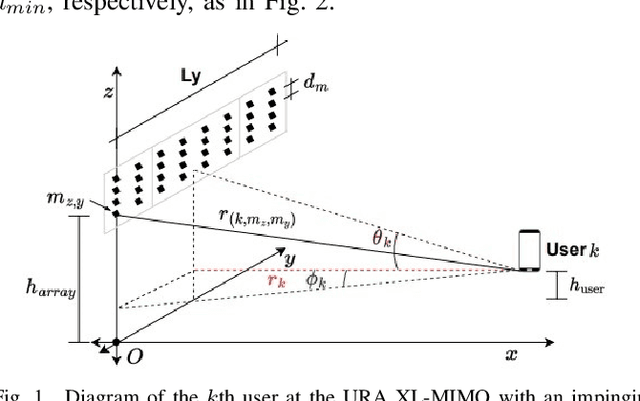
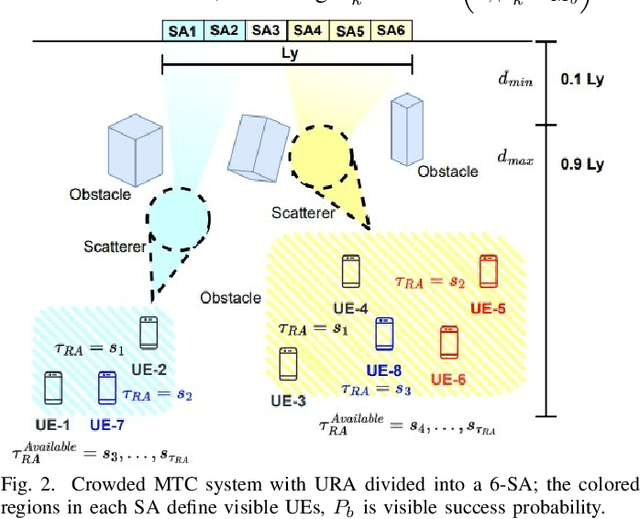
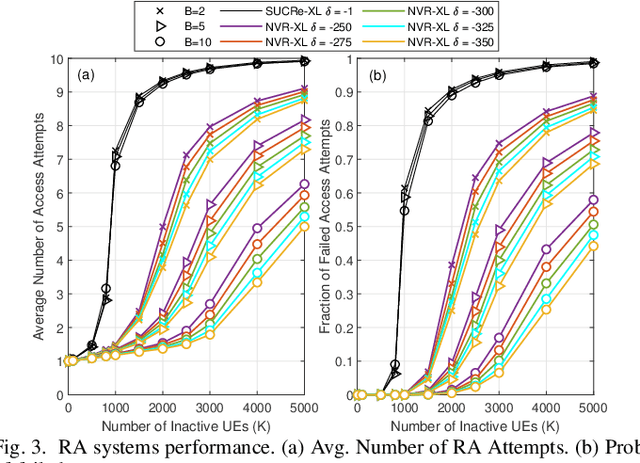
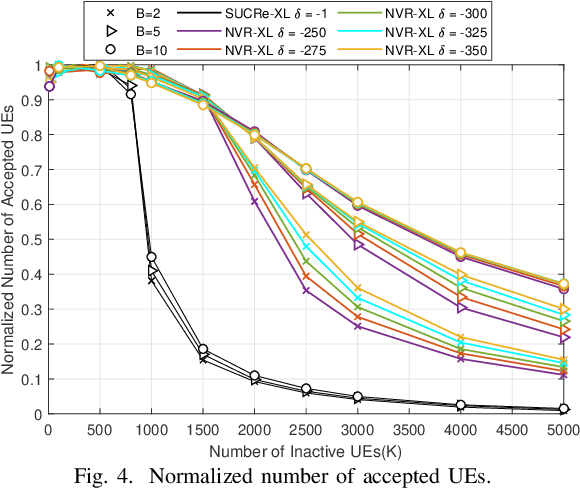
Abstract:Massive MIMO is one of the key technologies to support the growth of massive access attempts by devices, such as in massive machine type communication (mMTC). The evolution of antenna array technology brought the recent extra-large scale massive multiple input multiple output (XL-MIMO) systems, seen as a promising technology for providing very high-data rates in high-user density scenarios. Spatial non stationarities and visibility regions (VRs) occur across all huge XL array extension, since its large dimension is of the same order of the distances to the user equipment (UE). We investigate the random access (RA) problem in crowded XL-MIMO scenarios. The proposed nonorthogonal multiple access (NOMA) visible region extra large array (NVR-XL) protocol takes advantage of the power domain NOMA to allow access of two or more users colliding in the same XL sub-array (SA) selecting the same pilot sequence. The NVRXL provides a reduction in the number of attempts to access the network, while improving the average sum-rate, as the number of SA increases.
Randomized Control of Wireless Temporal Coherence via Reconfigurable Intelligent Surface
Jan 31, 2023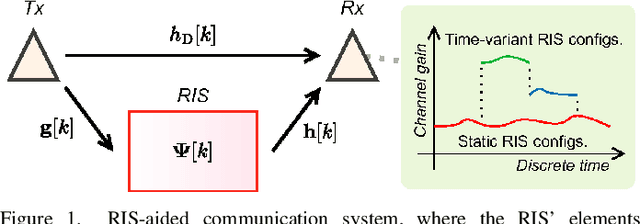
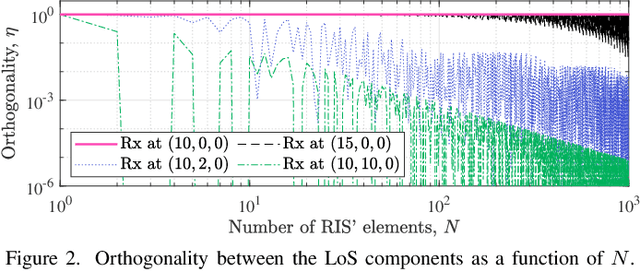

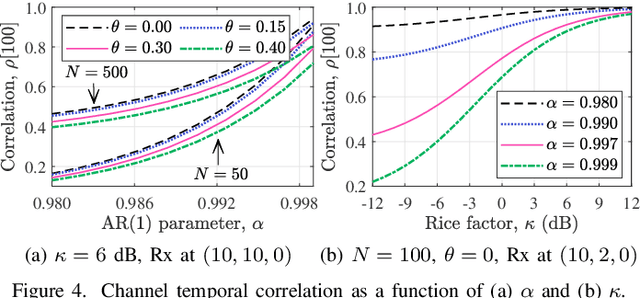
Abstract:A reconfigurable intelligent surface (RIS) can shape the wireless propagation channel by inducing controlled phase shift variations to the impinging signals. Multiple works have considered the use of RIS by time-varying configurations of reflection coefficients. In this work we use the RIS to control the channel coherence time and introduce a generalized discrete-time-varying channel model for RIS-aided systems. We characterize the temporal variation of channel correlation by assuming that a configuration of RIS' elements changes at every time step. The analysis converges to a randomized framework to control the channel coherence time by setting the number of RIS' elements and their phase shifts. The main result is a framework for a flexible block-fading model, where the number of samples within a coherence block can be dynamically adapted.
Multi-Power Level $Q$-Learning Algorithm for Random Access in NOMA mMTC Systems
Jan 12, 2023Abstract:The massive machine-type communications (mMTC) service will be part of new services planned to integrate the fifth generation of wireless communication (B5G). In mMTC, thousands of devices sporadically access available resource blocks on the network. In this scenario, the massive random access (RA) problem arises when two or more devices collide when selecting the same resource block. There are several techniques to deal with this problem. One of them deploys $Q$-learning (QL), in which devices store in their $Q$-table the rewards sent by the central node that indicate the quality of the transmission performed. The device learns the best resource blocks to select and transmit to avoid collisions. We propose a multi-power level QL (MPL-QL) algorithm that uses non-orthogonal multiple access (NOMA) transmit scheme to generate transmission power diversity and allow {accommodate} more than one device in the same time-slot as long as the signal-to-interference-plus-noise ratio (SINR) exceeds a threshold value. The numerical results reveal that the best performance-complexity trade-off is obtained by using a {higher {number of} power levels, typically eight levels}. The proposed MPL-QL {can deliver} better throughput and lower latency compared to other recent QL-based algorithms found in the literature
* 13 pages, 9 figures, ETT-Wiley publication
 Add to Chrome
Add to Chrome Add to Firefox
Add to Firefox Add to Edge
Add to Edge